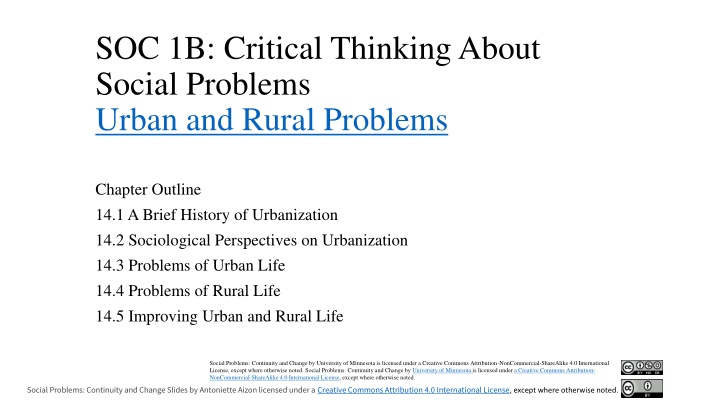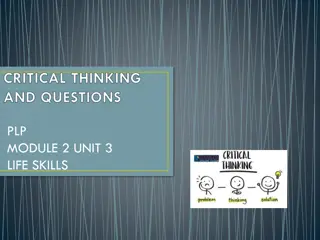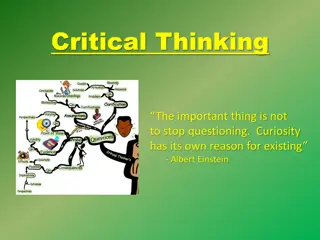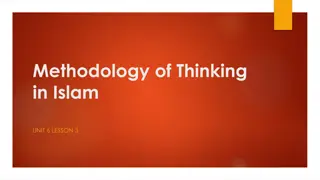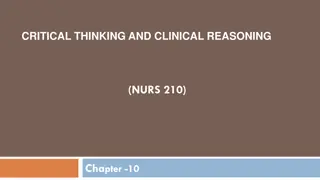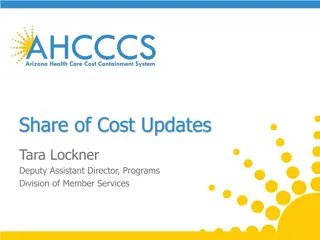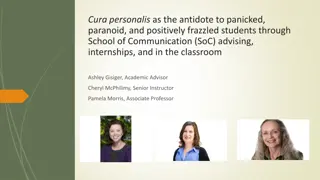SOC 1B: Critical Thinking About Social Problems
Explore the historical shift from rural to urban areas, examining the factors influencing urbanization, such as immigration and industrialization. Learn about the health problems, overcrowding, sanitation issues, and social unrest that arose in cities during this transformative period. Discover how urbanization impacted both Eastern and Western cities in the United States, shaping their social landscapes.
Download Presentation

Please find below an Image/Link to download the presentation.
The content on the website is provided AS IS for your information and personal use only. It may not be sold, licensed, or shared on other websites without obtaining consent from the author.If you encounter any issues during the download, it is possible that the publisher has removed the file from their server.
You are allowed to download the files provided on this website for personal or commercial use, subject to the condition that they are used lawfully. All files are the property of their respective owners.
The content on the website is provided AS IS for your information and personal use only. It may not be sold, licensed, or shared on other websites without obtaining consent from the author.
E N D
Presentation Transcript
SOC 1B: Critical Thinking About Social Problems Urban and Rural Problems Chapter Outline 14.1 A Brief History of Urbanization 14.2 Sociological Perspectives on Urbanization 14.3 Problems of Urban Life 14.4 Problems of Rural Life 14.5 Improving Urban and Rural Life Social Problems: Continuity and Change by University of Minnesota is licensed under a Creative Commons Attribution-NonCommercial-ShareAlike 4.0 International License, except where otherwise noted. Social Problems: Continuity and Change by University of Minnesota is licensed under a Creative Commons Attribution- NonCommercial-ShareAlike 4.0 International License, except where otherwise noted. Creative Commons License Social Problems: Continuity and Change Slides by Antoniette Aizon licensed under a Creative Commons Attribution 4.0 International License, except where otherwise noted.
14.1 A Brief History of Urbanization Learning Objectives: Discuss the health problems that resulted when cities developed. Explain why urbanization grew in the United States during the nineteenth century. List the problems poor nations face as their cities grow even larger.
14.1 A Brief History of Urbanization Urbanization is the shift from rural areas to large cities. The earliest cities developed in ancient times after the rise of horticultural and pastoral societies made it possible for people to stay in one place instead of having to move around to find food. During the American colonial period, cities along the eastern seaboard were the centers of commerce and politics. Boston, New York, and Philadelphia were the three largest cities in population size. US cities became more numerous and much larger during the nineteenth century because of two trends. The first was immigration, as waves of immigrants from Ireland and then Italy and other nations began coming to the United States during the 1820s. The second was industrialization, as people moved to live near factories and other sites of industrial production.
14.1 A Brief History of Urbanization Issues that came from urbanization: Overcrowding people living in closed proximity to each other. Lack of sanitation causing rampant diseases; increasing death rates from cholera, typhoid, and other illnesses. Crime, riots, and other mob violence the 1830s was dubbed as the turbulent era . Most of this mass violence was committed by native-born whites against African Americans, Catholics, and immigrants. Native whites resented their presence and were deeply prejudiced against them. American cities grew even more rapidly after the Civil War as both industrialization and immigration continued. By the early years of the twentieth century, US cities on the East Coast were almost unimaginably crowded, and their living conditions continued to be wretched for many of their residents. As Americans moved west after the Civil War and during the twentieth century, western cities appeared almost overnight and expanded the pace of urbanization.
14.1 A Brief History of Urbanization Looking at how immigrants were being treated by this nation historically, are we getting better, worse, or acting in the same manner as the 1800s? Are we doomed to make the same mistake?
14.1 A Brief History of Urbanization New York and Chicago show some decline after 1950. This decline reflects two other trends affecting cities in the past half-century: (1) the movement of people from cities to suburbs (2) the movement of Americans from northern cities to southern and southwestern cities. Reflecting this second trend, and also reflecting increases in immigration from Mexico and Asia, southern and southwestern cities have grown rapidly during the past few decades. The United States has become much more urbanized since its formation. Today, more than three-fourths of the US population lives in an urban area (defined generally as an incorporated territory with a population of at least 2,500). Less than one-fourth lives in a rural area.
14.1 A Brief History of Urbanization Global Urbanization Only 3 percent of the world s population lived in urban areas in 1800. By a century later in 1900, 14 percent of the world s population lived in urban areas, and twelve cities had populations over 1 million. Just a half-century later in 1950, the world s urban population had doubled to 30 percent, and the number of cities over 1 million grew six times to eighty-three cities.
14.1 A Brief History of Urbanization Global Urbanization Today, more than half the world s population lives in urban areas, and the number of cities over 1 million stands at more than four hundred. By 2030, almost two-thirds of the world s population is projected to live in urban areas. The number of megacities cities with populations over 10 million rose from three in 1975 to sixteen in 2000, and is expected to reach twenty-seven by 2025 (Population Reference Bureau, 2012). Percentage of World Population Living in Urban Areas http://en.wikipedia.org/wiki/File:Urban_population_in_2005_world_map.PNG Source: Adapted from http://en.wikipedia.org/wiki/File:Urban_population_in_2005_world_map.PNG
14.1 A Brief History of Urbanization Issues with Global Urbanization Urbanization still varies around the world. Wealthy nations are more urban than poor nations, thanks in large part to the latter s rural economies. Urbanization in poor nations is proceeding rapidly. Most megacities are now in, and will continue to be in, nations that are relatively poor or desperately poor. The number of urban residents in these nations will increase greatly in the years ahead as people there move to urban areas and as their populations continue to grow through natural fertility. First, women in poor nations have high fertility rates. Second, poor nations have very high proportions of young people, and these high rates mean that many births occur because of the large number of women in their childbearing years.
14.1 A Brief History of Urbanization Issues with Global Urbanization Rapid urbanization poses both opportunities and challenges for poor nations. Jobs are more plentiful in cities than in rural areas and incomes are higher, and services such as health care and schooling are easier to deliver because people are living more closely together. Women in poor nations generally fare better in cities than in rural areas in terms of education and employment possibilities (United Nations Population Fund, 2011). In the large cities of poor nations, homeless children live in the streets as beggars, and many people lack necessities and conveniences that urban dwellers in industrial nations take for granted.
14.2 Sociological Perspective on Urbanization Learning Objective: List the assumptions of the three major sociological perspectives concerning urbanization.
14.2 Sociological Perspective on Urbanization Theoretical perspective Major assumptions Cities serve many important functions for society but also have their dysfunctions. Functionalist theorists differ on the relative merits and disadvantages of urban life, and in particular on the degree to which a sense of community and social bonding exists within cities. Functionalism Cities are run by political and economic elites that use their resources to enrich their positions and to take resources from the poor and people of color. The diversity of social backgrounds found in cities contributes to conflict over norms and values. Conflict theory City residents differ in their types of interaction and perceptions of urban life. Cities are not chaotic places but rather locations in which strong norms and values exist. Symbolic interactionism
14.2 Sociological Perspective on Urbanization Activity: Review the three theories discussed in the book, which of the three perspectives makes the most sense to you? Why?
14.3 Problems of Urban Life Learning Objectives: Discuss any three problems of urban life. Provide an example of a problem that specifically arises from the fact that cities consist, by definition, of large numbers of people living in a relatively small space.
14.3 Problems of Urban Life Life in US cities today is certainly complex. On the one hand, many US cities are vibrant places, filled with museums and other cultural attractions, nightclubs, theaters, and restaurants and populated by people from many walks of life and from varied racial and ethnic and national backgrounds. Many college graduates flock to cities, not only for their employment opportunities but also for their many activities and the sheer excitement of living in a metropolis. On the other hand, many US cities are also filled with abject poverty, filthy and dilapidated housing, high crime rates, traffic gridlock, and dirty air. Many Americans would live nowhere but a city, and many would live anywhere but a city. Cities arouse strong opinions, pro and con, because there are many things both to like and to dislike about cities.
14.3 Problems of Urban Life Problems Fiscal Problems The fiscal difficulties that cities routinely face became even more serious with the onset of the nation s deep recession in late 2007; fiscal problems include difficulties in paying for basic services such as policing, public education, trash removal, street maintenance, and snow removal (at least in cold climates), and in providing certain services for their residents who are poor or disabled. Crowding - cities are crowded in at least two ways: The first involves residential crowding: large numbers of people living in a small amount of space. The second type of crowding is household crowding: Dwelling units in cities (apartments and houses) are typically small because of lack of space, and much smaller overall than houses in suburbs or rural areas.
14.3 Problems of Urban Life Problems Housing Much urban housing is substandard. Adequate housing is not affordable for many city residents, as housing prices in cities can be very high, and usually higher than in rural areas, and the residents incomes are typically very low. Another housing concern is racial segregation.
14.3 Problems of Urban Life Problems Homelessness Many men, women, and children live in the streets, abandoned vehicles or houses, cheap motels, or trailers, or living in someone else s home temporarily. One-third of the homeless are victims of violence or theft during the year; this rate of victimization is four times higher than that in the general population (Wenzel, Leake, & Gelberg, 2001). It is difficult to count how many people are homeless. The definition of homeless means a person who do not have adequate shelter a car, an abandoned building, couch surfing would mean a person is not homeless. The federal government estimates 650,000 Americans to be homeless on any given night, and 1.6 million to use a shelter or other transitional housing annually (Lee et al., 2010). The US Conference of Mayors (2011) compiled information on homelessness in twenty-nine cities across the country. This large study yielded the following profile of homeless adults: 26% with severe mental illness 16% physically disabled 15% employed 13% victims of domestic violence 13% military veterans 4% HIV positive
14.3 Problems of Urban Life Problems Traffic and Transportation Someone living in an urban area may easily take an hour or longer to travel the same distance after crawling along in traffic and stopping at light after light, or sitting and crawling along in long miles of traffic on an urban highway. Gridlock occurs in urban areas, not rural ones, because of the sheer volume of traffic and the sheer number of intersections controlled by traffic lights or stop signs. To help reduce traffic congestion, cities long ago developed various means of public transportation: buses, subways, and light rail. Some cities have better public transportation than other cities; Los Angeles has a notoriously bad reputation for the quality of its public transportation. Consequence of traffic congestion: Stress. Huge financial costs.
14.3 Problems of Urban Life Problems Air Pollution Traffic creates pollution from motor vehicles exhaust systems, and some cities have factories and other enterprises that also pollute. As a result, air quality in cities is substandard. This poor air quality has significant health consequences, as it produces higher rates of respiratory and heart disease and higher mortality rates in cities (Stylianou & Nicolich, 2009).
14.3 Problems of Urban Life Problems Mental Health Stress in turn impairs the mental health of urban residents; residents have worse mental health than rural residents. They have much higher levels of mood and anxiety disorders and of schizophrenia (Lederbogen et al., 2011). Public Education Many city schools are housed in old buildings that, like much city housing, are falling apart. City schools are notoriously underfunded and lack current textbooks, adequate science equipment, and other instructional materials.
14.3 Problems of Urban Life Crime Rates in Large Cities and Rural Counties, 2010 (Number of Crimes per 100,000 Residents) Problems Crime Cities have much higher rates of violent and property crime than do small towns or rural areas. Explanations: More opportunity for victimization / opportunity. Crowded households are more stressful, and people who experience stress are more likely to be aggressive. Source: Federal Bureau of Investigation. (2011). Crime in the United States, 2010. Washington, DC: Author.
14.4 Problems in Rural Life Learning Objectives: List three positive aspects of rural life in the United States. Describe two problems of rural life in the United States.
14.4 Problems in Rural Life About one-fourth of the US population and more than 40 percent of the world population live in rural areas. The advantages of cities are often disadvantages for rural areas, and the disadvantages of cities are often advantages for rural areas. Rural areas have much more open space and less crowding. The air is cleaner because there is less traffic and fewer factories and other facilities that emit pollution. Life in rural areas is thought to be slower paced, resulting in lower levels of anxiety and a greater sense of relaxation. Rural areas are often poor and lack the services, employment opportunities, and leisure activities that cities have. Teens often complain of boredom, and drug and alcohol use can be high (Johnson et al., 2008). Public transportation is often lacking, making it difficult for people without motor vehicles, who tend to have low incomes, to get to workplaces, stores, and other venues (Brown, 2008). Rural residents with motor vehicles often must still travel long distances to shop, to visit a doctor, to go to work, and to do any number of other activities.
14.4 Problems in Rural Life Rural Health The National Rural Health Association (2012) points out that although one- fourth of the US population is rural, only one-tenth of physicians practice in rural areas. Small hospitals typical of rural areas generally lack high-quality care and equipment. The long distances that ambulances and patients must travel. Rural areas are also much more likely than urban areas to lack mental health care, drug abuse counseling and programs, and other services related to physical and mental health. Rural areas have an aging population, or a greater percentage of adults aged 65 and older.
14.4 Problems in Rural Life Rural Schools and Education Rural areas have been losing population, they have been experiencing declining school enrollment and school closings. Resulting in teachers loosing their jobs, children having to commute farther to attend school. Rural areas per-capita income and sales tax revenue are lower than that for urban and suburban areas resulting in less funding of public schools. Rural school districts have considerable expenses for transporting children to and from school, after-school athletic events, and other activities. It is often difficult to recruit and retain quality teachers in rural areas. This problem has forced some rural school districts to offer hiring bonuses or housing assistance to staff their schools.
14.4 Problems in Rural Life Rural Poverty The poverty rate is somewhat higher overall in rural areas than in urban areas. In 2010, 16.5 percent of rural residents were classified as officially poor, compared to 14.9 percent of urban residents. Rural poverty is thought to be more persistent than urban poverty because of the factors that contribute to its high rate. Out-migration of young, highly skilled workers. The lack of industrial jobs that typically have been higher paying than agricultural jobs. Limited opportunities for the high-paying jobs of the information age. Rural areas are also more likely than nonrural areas to lack human services programs to help the poor, disabled, elderly, and other people in need of aid (National Advisory Committee on Rural Health and Human Services, 2011).
14.4 Problems in Rural Life Domestic Violence One of the sad facts of rural life is domestic violence. Rural police may be unenlightened about domestic violence and may even know the abuser; for either reason, they may not consider his violence a crime, and abused women may be that much more reluctant to tell the police about their abuse. Women often find it difficult to get help and/or to leave their abusers wherever they live. The availability of battered women s shelters, which provide invaluable services for abused women and any children they might have. In rural areas, abused women are also more likely than their urban counterparts to lack neighbors and friends to whom they can turn for support, or at least to live farther from these individuals.
14.5 Improving Urban and Rural Life Learning Objectives: Explain the value of a sociological perspective for addressing urban housing and crowding problems.
14.5 Improving Urban and Rural Life Create a public policy / program that addresses some of the issues identified in urban areas: Traffic Congestion Overcrowding how can you make an overcrowded place feel less crowded Crime crime is inevitable, how would you reduce crime rates Air pollution due to traffic / industrial Create a public policy / program that addresses some of the issues identified in rural areas: Transportation (lack there of) Access to medical / mental health services increase the number of professionals in the area Environment pollution agricultural waste
14.6 End of Chapter 1. Urbanization is a consequence of population growth. Cities first developed in ancient times after the rise of horticultural and pastoral societies and took off during the Industrial Revolution as people moved to be near factories. Urbanization led to many social changes then and continues today to affect society. Functionalism, conflict theory, and symbolic interactionism offer varied understandings of urbanization. Functionalists have a mixed view of urbanization, while conflict theorists hold a negative view. Cities face many problems, several of which reflect the fact that cities feature large numbers of people living within a relatively small space. Among the most serious of these problems are residential crowding, substandard and racially segregated housing, heavy traffic and great amounts of air pollution, and high crime rates. Rural areas face many challenges that result from their sparse populations and the great distances that people must often travel. Among other problems, rural areas have a lack of economic opportunities in today s information age and a general lack of various kinds of human services. 2. 3. 4.
